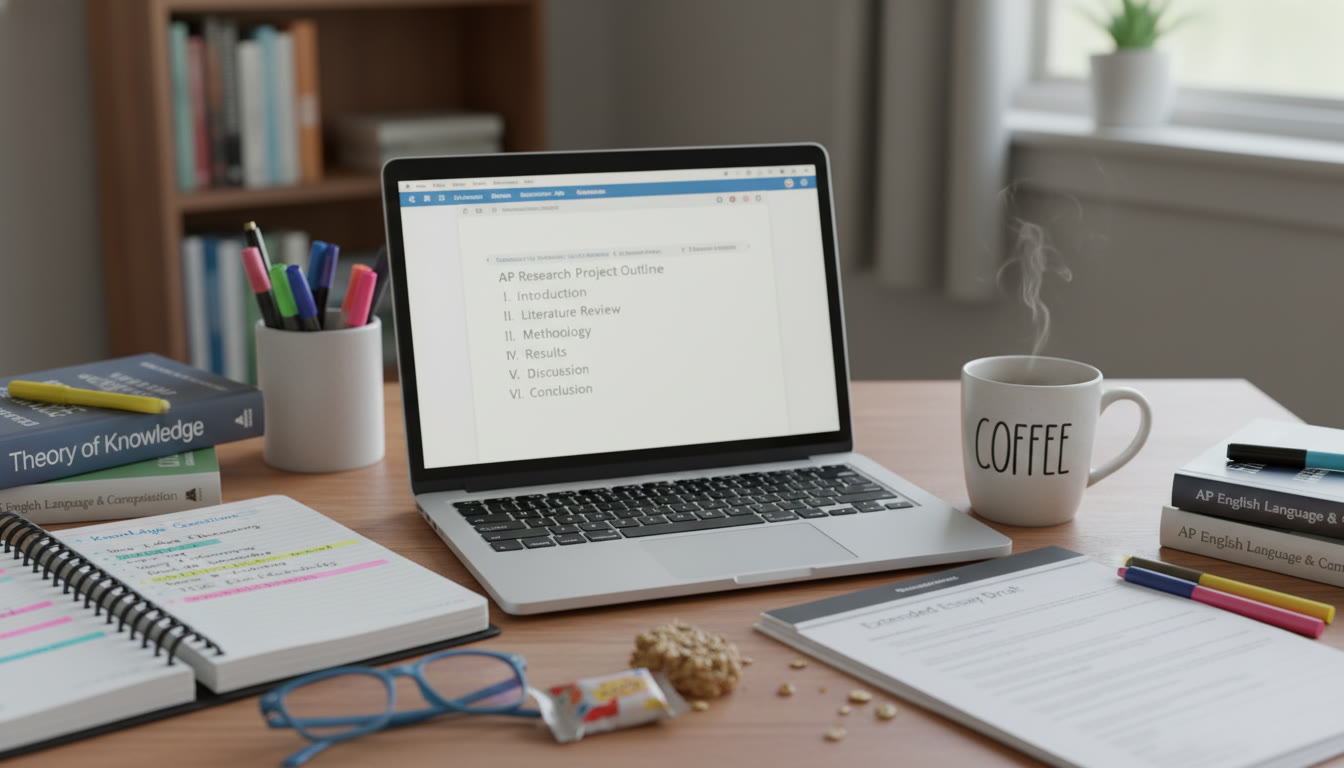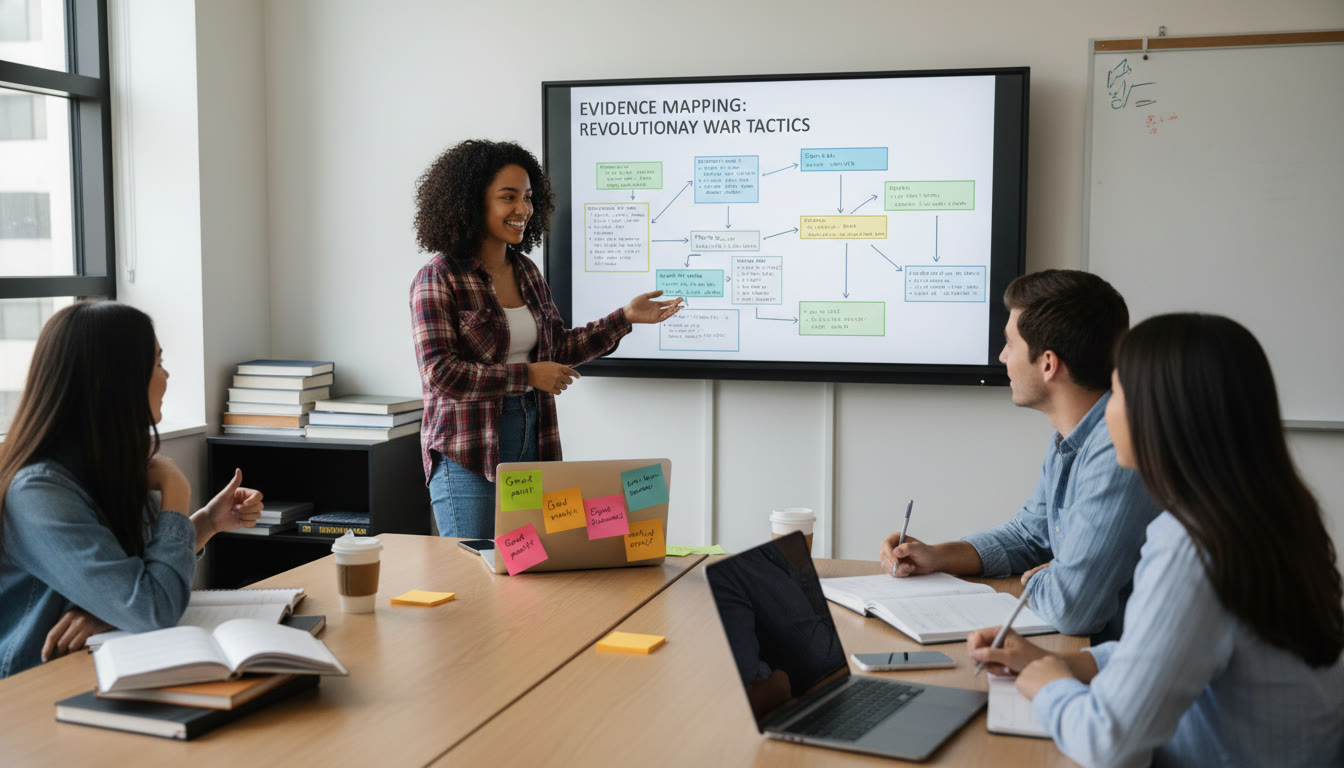Why IB TOK/EE and AP Seminar/Research Belong on the Same Desk
If you’ve ever sat in an IB Theory of Knowledge (TOK) class or spent late nights drafting an Extended Essay (EE), and then stepped into AP Seminar or AP Research, you probably noticed a comforting overlap: they’re all about asking good questions, trusting solid evidence, and building persuasive arguments. These courses are different routes up the same mountain of scholarly skills. Together, they teach you how to spot weak evidence, craft a compelling claim, and communicate with clarity — abilities colleges and employers prize.

What Each Course Emphasizes — A Quick Comparison
Before we dive into practical techniques, here’s a short map to orient you. Think of this as the toolkit each course provides.
- IB TOK — Metacognition and the limits of knowledge: TOK helps you examine how knowledge is produced, the role of evidence across Areas of Knowledge (AOKs), and how biases shape understanding.
- IB EE — Extended independent research: The EE is an in-depth academic essay where methodological rigor, source evaluation, and clear argumentation are essential.
- AP Seminar — Team-based inquiry and synthesis: AP Seminar trains you to evaluate multiple perspectives, synthesize diverse evidence, and produce written and oral arguments for various audiences.
- AP Research — Independent academic project: A college-level investigation that culminates in a 4,000–5,000 word paper and oral defense, focusing on methodology, evidence, and contribution to understanding.
The Shared Core: Evidence, Analysis, Argument
No matter which label you put on your course, three things matter most: evidence (what you use), analysis (how you interpret it), and argument (how you connect interpretation to claim). Master these and you’ll move from descriptive writing to persuasive, scholarly work.
Building Strong Claims: From TOK Questions to Research Questions
Every great piece of research begins with a question. The difference between a good and a great question is specificity and scholarly value.
- Weak question: “Is social media bad for teenagers?” — too broad, moralistic, and hard to operationalize.
- Stronger question: “How does daily time spent on image-based social platforms correlate with self-reported body dissatisfaction among 15–17-year-olds in urban schools?” — measurable, time-bounded, and researchable.
In TOK, questions often probe sources and ways of knowing: “To what extent can emotion be trusted as a source of knowledge in history?” Translating TOK curiosity into EE or AP Research practice means turning an epistemic probe into a testable or analyzable question. Think: What would count as evidence? How would I measure it? What methodology fits?
Evaluating Evidence: Criteria That Matter
Not all evidence is created equal. Whether you’re citing a philosophical text in TOK, archival documents in EE, or empirical studies in AP Research, use the same checklist to evaluate sources.
- Authority: Who produced this evidence? Is the author credible in the field?
- Purpose and Bias: Why was this produced? Is there an agenda?
- Methodology: If it’s a study, were the methods sound? Sample size, controls, and operational definitions matter.
- Context and Currency: When and where was it produced? Does context change its relevance?
- Reproducibility: Could others reach similar findings using the same methods?
Example: Evaluating a Study
Suppose you find a paper claiming that “mindfulness training reduces math test anxiety in high school students.” Before using it as keystone evidence, check these points: sample size and selection, control group presence, length of the intervention, measurement instruments for anxiety, and whether results were statistically significant or practically meaningful. If the study used a tiny sample from one private school, its generalizability is limited; that nuance belongs in your analysis.
Structuring Argument: Move Beyond “Because I Say So”
A persuasive academic argument is a chain of reasons, each supported by evidence and analysis. Here’s a reliable structure that works across TOK essays, EEs, and AP Research papers:
- Claim: A clear, concise thesis or assertion.
- Warrant: Explanation of why the evidence supports the claim — the logical glue.
- Evidence: Data, quotes, studies, or examples supporting the claim.
- Qualifier & Counterclaim: Acknowledge limits, exceptions, and alternative explanations.
- Impact: Why this matters — contribution to knowledge, real-world implications.
Sample Paragraph Using the Structure
Claim: Implementing peer-led study groups improves AP Seminar team project outcomes in mixed-ability classes. Warrant: Peer instruction leverages social learning and clarifies misunderstandings through dialogue. Evidence: Observations from three mixed-ability classes showed improved rubric scores after structured peer sessions, with qualitative feedback indicating higher confidence. Counterclaim: Peer-led models can reinforce misconceptions if not monitored. Response: A rotating tutor role and periodic teacher checkpoints can mitigate this risk. Impact: Scaled carefully, peer-led models are a cost-effective way to increase collaboration and performance.
Designing Methodology: Where TOK Skepticism Meets EE Rigor
Designing a method isn’t just about picking a survey or experiment — it’s about aligning your method to your question and understanding the limits of what your method can show. TOK trains you to doubt and reflect on knowledge claims; that same reflective stance makes your EE or AP Research methodology stronger because you can pre-empt critiques.
| Research Goal | Possible Methods | Strengths | Limitations |
|---|---|---|---|
| Measure prevalence of test anxiety | Standardized survey (validated scale) | Quantitative, comparable, scalable | Self-report bias, contextual differences |
| Explore students’ reasoning about moral dilemmas | Semi-structured interviews | Depth, nuance, captures thought processes | Time-consuming, smaller samples, interpretation required |
| Test an educational intervention | Randomized controlled trial or quasi-experiment | Strong causal inference (if randomized) | Resource-intensive, ethical considerations, external validity |
Triangulation: Mix Methods to Strengthen Claims
Often the most convincing projects combine methods. For instance, a survey can establish prevalence, while interviews explain the “why” behind the numbers. TOK’s emphasis on multiple ways of knowing — reason, emotion, language, perception — encourages this pluralistic approach.
Writing with Clarity: From TOK Reflection to APA Precision
Clarity is persuasive. Good structure, concise sentences, and explicit links between claim and evidence make it easy for readers (and examiners) to follow your reasoning. A few practical habits:
- Use topic sentences that preview the paragraph’s claim.
- Refer explicitly to evidence: don’t just quote — interpret.
- Use transition phrases that show argument flow: “therefore,” “however,” “on the other hand,” “this suggests.”
- Be disciplined with citations and formatting; check the required style (MLA, APA, or IB guidance) early.
Counterclaims and TOK-style Reflexivity
One of the biggest differences between average and outstanding work is how you handle disagreement. TOK trains you not only to present counterclaims but to interrogate the assumptions behind them. In AP Research and the EE, this reflexivity becomes methodological honesty: explicitly acknowledging limitations and alternate explanations increases credibility.
How to Present a Counterclaim Well
- State the counterclaim neutrally — avoid strawman framing.
- Provide evidence that supports the counterclaim where appropriate.
- Explain why, despite the counterclaim, your interpretation remains preferred — or acknowledge that your findings are tentative.
Assessment Mindset: What Examiners Look For
Whether it’s TOK, EE, AP Seminar, or AP Research, assessors look for the same signals: clarity of question, rigor of method, appropriate use of evidence, depth of analysis, and quality of communication. Examiners reward thinking that is sophisticated but transparent — show your reasoning.
Practical Study and Project Tips (What Works in the Real World)
Here’s a playbook you can adopt right away.
- Start early: Research projects are iterative. The earlier you begin, the more you can test assumptions and revise.
- Create a source matrix: A spreadsheet with columns for claim, evidence, method, and notes. This helps you spot gaps and over-reliance on one type of source.
- Draft a methods appendix: Even if not required, a detailed methods appendix saves you when you defend choices and helps examiners follow your procedure.
- Schedule regular feedback: Weekly check-ins with a teacher, mentor, or tutor keep the project on track. Personalized tutors — like those at Sparkl — can provide targeted 1-on-1 guidance, tailored study plans, and AI-driven insights to accelerate iteration.
- Practice oral presentation: AP Seminar and Research include oral components. Rehearse with peers and record yourself to refine pacing and clarity.
Examples of Successful Question-to-Argument Journeys
To make these ideas concrete, here are two mini case studies showing how a question evolves into evidence-backed argument.
Case Study A — From TOK Curiosity to EE Argument
Initial TOK question: “Can eyewitness testimony be trusted in disaster reporting?”
EE translation: “How reliable are eyewitness testimonies of urban flood events in [city] between 2005–2015, as measured by consistency with hydrological records and subsequent media corrections?”
Method: Mixed methods — archival analysis of media reports, cross-check with official hydrological data, and interviews with journalists. Evidence synthesis showed frequent discrepancies in immediate reports due to emotional salience and urgency, but many reports were corrected within 48 hours. Argument: Eyewitness testimony in disaster reporting is valuable for immediacy and human perspective but must be contextualized with official data and ethical reporting practices.
Case Study B — AP Research Project
Question: “Does incorporating TOK-style reflection prompts into AP Seminar team projects improve the depth of counterargumentation in final reports?”
Method: Quasi-experimental design with two cohorts (one using TOK prompts, one standard rubric). Analysis included rubric-scored reports and student surveys. Results indicated a statistically significant improvement in acknowledged counterclaims and reflexivity in the TOK-prompt cohort. Practical implication: Simple TOK-inspired prompts can be integrated into AP Seminar pedagogy to deepen critical engagement.
Common Pitfalls and How to Avoid Them
- Overclaiming: Don’t generalize beyond your evidence. Use qualifiers (“suggests,” “is associated with”) when inference is limited.
- Poor source balance: Avoid heavy reliance on one source type. Mix primary and secondary sources, and balance quantitative with qualitative where appropriate.
- Neglecting ethical concerns: If your research involves people, consider consent, confidentiality, and potential harm early on.
- Weak linkage between evidence and claim: Always show the warrant — why the evidence matters for the claim.
How Personalized Tutoring Fits In — When and Why to Use It
Independent study is powerful, but targeted support accelerates progress. Personalized 1-on-1 tutoring can help you in concrete ways:
- Tailored study plans that map milestones and methods suited to your question.
- Expert tutors who read drafts and give focused feedback on argument logic and methodology.
- Practice oral defense sessions with realistic feedback on clarity and delivery.
- AI-driven insights that highlight weaknesses in structure or evidence balance and suggest next steps.
For students juggling IB and AP demands, a tutor can be the connective tissue that helps transfer skills from TOK and EE into AP Seminar and AP Research projects — making your work more coherent, rigorous, and defensible.
Checklist for Final Submission
Run through this before you hand in the EE or AP Research paper.
- Is the research question clear and specific?
- Does the methodology align with the question and is it described in sufficient detail?
- Are key claims supported by balanced, evaluated evidence?
- Have you acknowledged counterclaims and limitations?
- Is the writing clear, logically organized, and properly cited?
- Have you practiced the oral defense or presentation?
Final Thoughts: Intellectual Curiosity + Rigor = Advantage
IB TOK and EE encourage intellectual curiosity and reflective thinking. AP Seminar and AP Research demand rigor and academic communication. When you intentionally combine these strengths — TOK’s reflexivity and EE’s independent research habits with AP’s focus on synthesis and presentation — you become a far stronger scholar. That transformation is not about being perfect; it’s about being methodical, honest about limits, and persuasive where it counts.

Whether you’re an IB student transitioning to AP, an AP student drawing on TOK insights, or a parent guiding a student through both worlds, know this: the skills you’re building are cumulative. Start with precise questions, choose methods that fit, analyze evidence with healthy skepticism, and present arguments with humility and clarity. When you pair that approach with targeted support — like regular mentoring, structured feedback, and the occasional personalized tutor to unblock tough decisions — your research won’t just meet expectations; it will stand out.
Good luck, and enjoy the craft of turning curiosity into clear, evidence-based argument. If you want a customized roadmap — from question refinement to oral defense coaching — Sparkl’s personalized tutoring can help you design a plan and walk alongside you at every step.























No Comments
Leave a comment Cancel